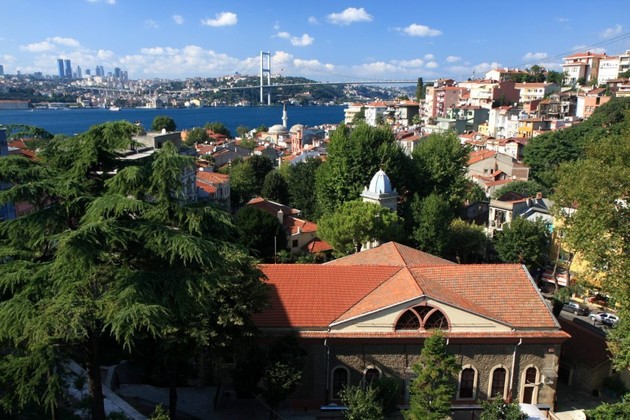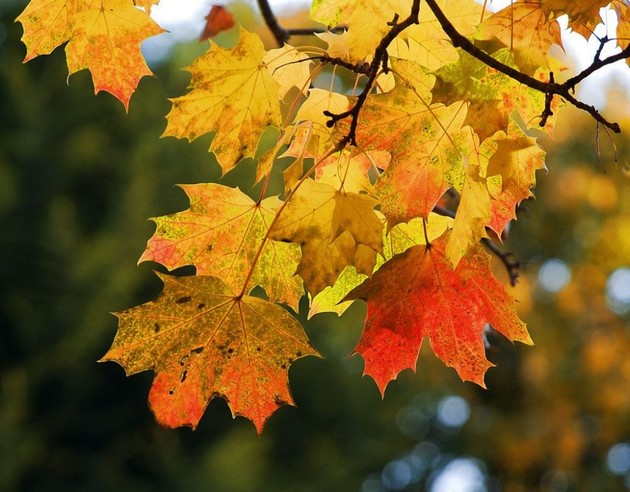© Turkuvaz Haberleşme ve Yayıncılık 2024
Before stone monuments came to be, natural wonders were the settings for the grand storytelling of folkloric customs and beliefs. Large, ancient trees were among those natural wonders, bearing witness to human dramas from their aloof perspectives. Turkish society continues to admire the longevity and grandness of the plane tree for its natural ability to place local cultures and extended communities alike in an ecological relationship with the passage of time, providing a direct link to a universal source of creation.
From the plane tree that took root in 1548 alongside Mihrimah Sultan Mosque under the artful hands of the preeminent Ottoman architect Mimar Sinan to its brethren lining the Asian shorefront avenue of Paşalimanı, the trees continue to flourish near the pier in Üsküdar, extending northward to Çengelköy and to the Black Sea beyond. The great double row of thick spotted trunks and rich bright-green leaves reach skyward, sheltering the way for the cool, traditional respites of many well-shaded cafes.
The opulent arched gateway to Dolmabahçe Palace stares with unrivaled pretense from across the Bosporus at the pier in Üsküdar like an affront to the humility of the fishermen, boatmen, commuters, florists and salesmen of all kinds who hawk and haul all day at the dock. A few steps away, the neighborhood begins to envelop people, resident and visitors alike, in an Ottoman plane tree grove.
Symbolically cultivated at every mosque in deference to Osman, first in the Ottoman dynasty, the tree is a universal and binding element of Turkish society, from Topkapı Palace to the poet's cafe. And yet, its roots are said to go even deeper than Osman's dream.

Turkic myths and folklore recall a prehistoric reverence for trees as heirs to the cosmic concept of the "world tree," the place where spiritual meets material. According to the legend, the world began from the root of the world tree, and at its base beneath its protecting limbs, people seek and sometimes find the divine nature of themselves and the world.
Traditionally, the Altai people believed people were the descendants of a sacred tree. Nowadays, the flag of the Chuvash Republic in Russia is emblazoned with the tree of life, as is the 5 kuruş Turkish coin since 2009. In the early 1940s, a publication appeared called "Çınaraltı" (Under the Plane Tree), forwarding the nationalist ideology of pan-Turkism to unite every nation with Turkic roots. The movement gained momentum, especially during the first decade of the 20th century with the founding of the Republic of Turkey.While the plane tree is often hallowed among Turkic people, its reputation is bolstered by its special Ottoman legacy. Along the shoreline Paşalimanı Avenue in Üsküdar, many plane trees are historic monuments, reinforcing and sometimes compromising the roads with their wide girth and staggering height. Many new saplings now also grow from the avenue as part of a public works effort during the "Year of the Plane Tree" in 2016.
Past the Ottoman-era tobacco warehouse now housing the Istanbul State Opera and Ballet and just after the entrance to Fethipaşa Forest, a reliable arboreal refuge from inner-city havoc, a magnificent plane tree stands at the corner of Paşalimanı and Tahtalı Street. Its mere presence is a living symbol of past centuries, demonstrating the integral role history plays on the present and in contemporary life. That tree marks the place where Kuzguncuk district begins. In the core of the neighborhood, another plane tree stands at the open-air waterfront cafe known as the Çınaraltı Cafe at the entrance to the mainline İcadiye Avenue, itself lined with the majestic trees.
From the waterfront cafe to İcadiye Avenue's ascending valley between the Nakkaş Hill and Fethipaşa Forest, the inhabitants of Kuzguncuk decorate the local plane trees with colorful yarn, reminiscent of the Turkic and Islamic traditions, like Hıdrellez, that celebrate trees for their spiritual powers. For centuries, Turkic Central Asian communities all the way to western China and eastern Russia have used the shed bark as a remedy for infertility and disease.

Among contemporaries, people in Kuzguncuk, as well as in the Emirgan and Çengelköy districts in Istanbul, sit under plane trees to converse. It is a place to air the gamut of human concerns, interests, curiosities, insights, controversies and inspirations. With a lifespan of more than 1,000 years, the trees feel like an eternal fixture. What is said in its shade has the potential to transcend human definition and reach an ageless source of continuity.
That is what poet Can Yücel found while writing at the Çınaraltı Cafe in Kuzguncuk. In fact, he frequented the place so often that the neighborhood establishment is now named after him. The cafe has now transformed into a flagship nexus of literary culture and national history. Under his many portraits, intellectuals and artists contemplate the eccentric wordsmith, commemorate his death anniversary and ruminate on his verse as they walk up İcadiye to a street on Nakkaş Hill, also named after him, close to the medieval Jewish cemetery.
Under the plane tree, new traditions of poetry and storytelling surface like the fish of the Bosporus. Likewise, common talk becomes political and questions are raised high above the minarets and towers of the urban establishment. The cafe under the plane tree, known in Turkish as the "Çınaraltı," is a place of transformation, where humanity and nature converse and debate.
With the passage of time, the shorefront cafe in Kuzguncuk and even the monumental plane tree have started to show the telltale signs of age, spurring people to speak of Byzantine times when the neighborhood, then known as Hrisokeramos, was famed for its golden tiled roofs. They are reminded of how Kuzguncuk itself was named "Little Raven" after the saint, Kuzgun Baba, who lived during the time of Sultan Mehmet II. They contemplate the lives of the diverse Ottoman citizens who met beneath the plane tree to wash and drink from the local fountain dated back to 1792. For the locals who still gather at the many vibrant cafes in Kuzguncuk, nostalgia is irresistible while imagining İcadiye Avenue before it was paved, when it ran with a full stream cultivating an impressive grove of plane trees.
People sit and sip the days and nights away by the shorefront plane tree of Kuzguncuk with the Bosporus at their side. They ponder and speak to each other like those before them. They reflect on the minaret of Kuzguncuk Mosque, listen to the bells of the Surp Krikor Lusavoriç Armenian Church and watch as the Jews of Beth Yaakov Synagogue stroll down the avenue on Saturdays to greet their Greek Orthodox neighbors. All of this happens right across the street from Çınaraltı Cafe.
